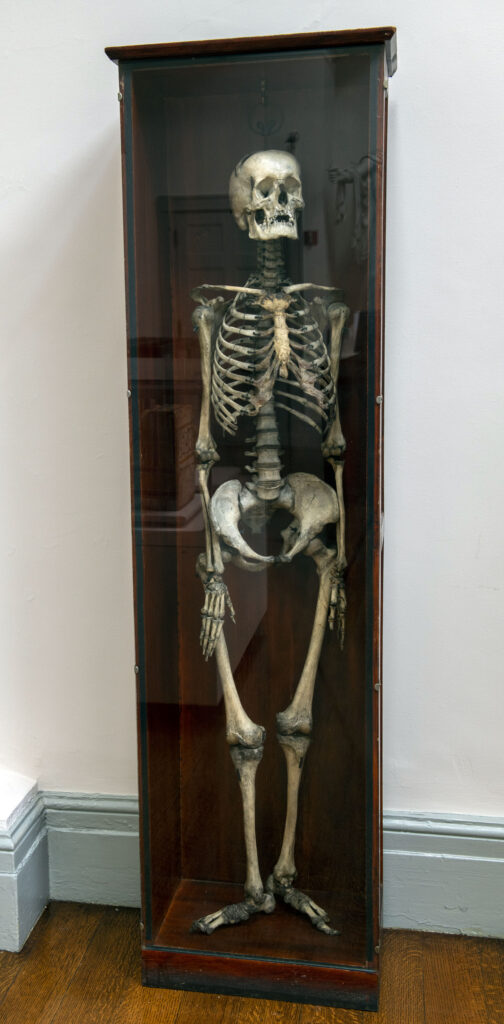The teaching skeleton hanging in the Ether Dome can be seen in the background of daguerreotypes showing the administration of ether anesthesia in 1847. Such skeletons were a common feature in hospitals and medical schools in the 19th century, and generally, these institutions used a mix of legal and illegal means to procure bodies for dissection and for skeletons. People whose families had the least societal power to push back were often targeted for grave robbing and other unsavory methods, so it was disproportionately people of color, frequently disparaged immigrant groups, and the very poor. The skeleton is a reminder that while standards in medical ethics change over time, it’s not always because no one knew better; usually it’s because the people who opposed a practice didn’t have the power to change it.

